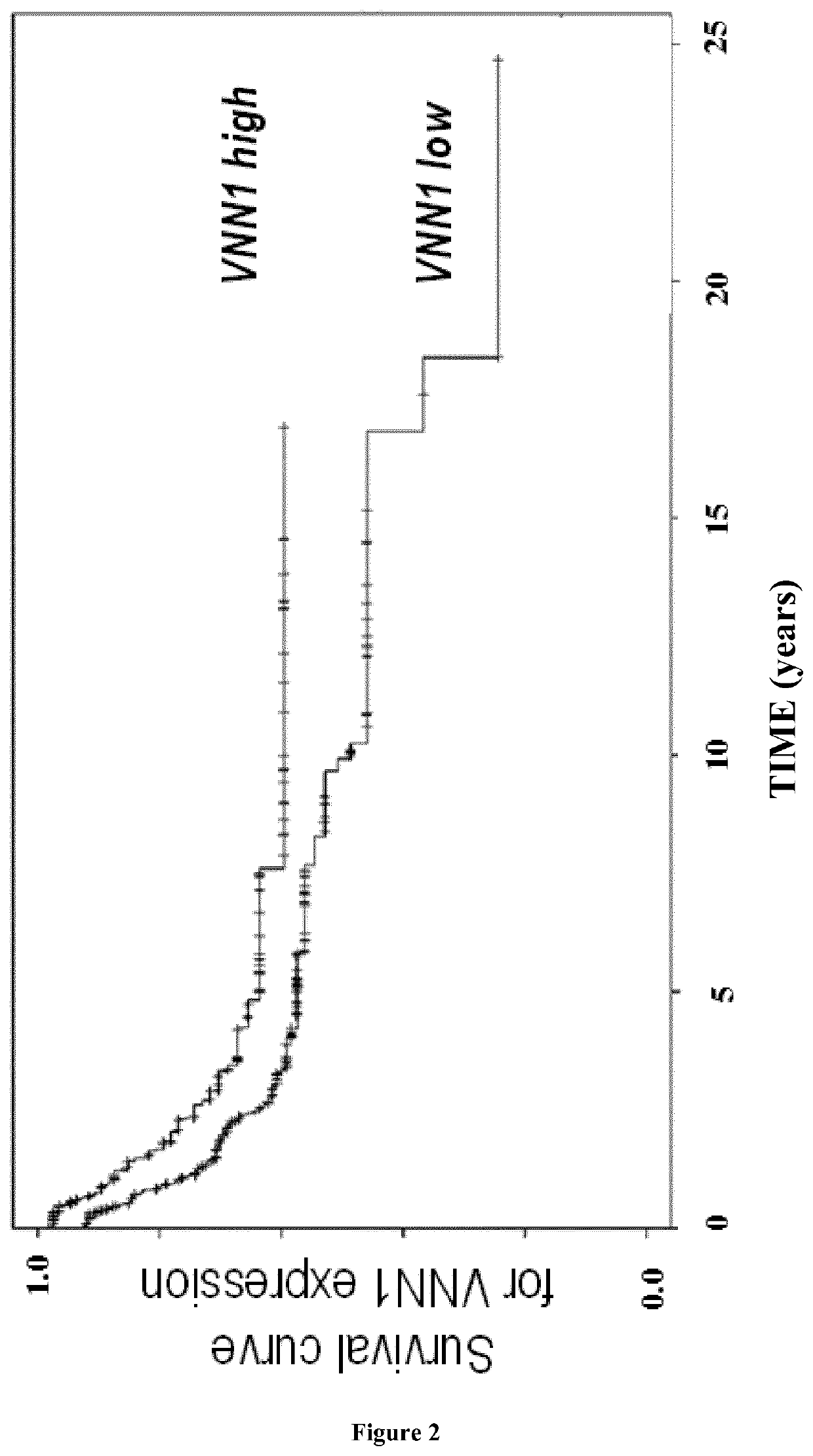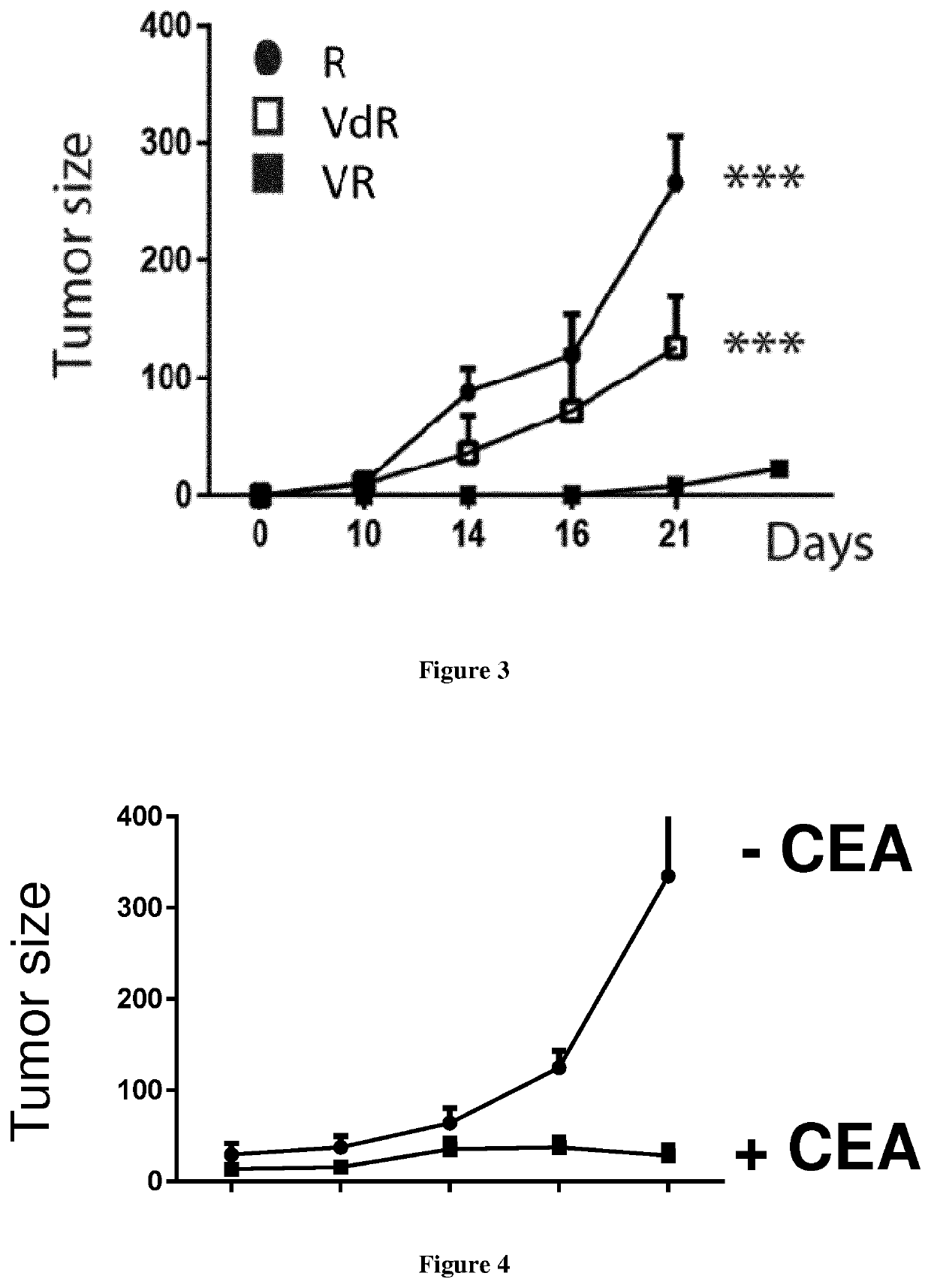Use of vnn1 as a biomarker and a therapeutic target in sarcomas
a sarcoma and biomarker technology, applied in the field of vnn1 as a biomarker and a therapeutic target in sarcomas, can solve the problems of unexplored involvement of vnn1 in the progression of sarcoma, complicated understanding of the natural history of these tumors and their response,
- Summary
- Abstract
- Description
- Claims
- Application Information
AI Technical Summary
Benefits of technology
Problems solved by technology
Method used
Image
Examples
example
[0056]Vnn1 Deficiency Enhances Soft Tissue Sarcoma Development in p16 / p19 Deficient Mice
[0057]Mice bearing a combined deletion of the senescence checkpoints p16 and p19 progressively develop tumors in various tissues. To test the contribution of Vnn1 to spontaneous tumor development, we produced p16 / p19 / Vnn1 triple KO mice and comparatively scored mouse survival and tumor incidence in three independent cohorts of p16 / p19 / Vnn1− / − versus p16 / p19− / − mice, derived from two independently-derived crosses between p16 / p19 KO and Vnn1 KO mice (not shown). As shown in FIG. 1, whereas 35% p16p19− / − mice progressively developed lethal tumors within 25 days as described {Sharpless, 2002 #1775}, 70% p16p19 / Vnn1− / − died of aggressive tumors before 200 days (p=0.032). Based on the survival curves, we scored the presence of tumors at the date of sacrifice (200 days or earlier when premature death occurred). 53% p16p19− / − and 65% p16p19 / Vnn1− / − mice had developed macroscopic or microscopic tumors at ...
PUM
| Property | Measurement | Unit |
|---|---|---|
| Fraction | aaaaa | aaaaa |
Abstract
Description
Claims
Application Information
 Login to View More
Login to View More - R&D
- Intellectual Property
- Life Sciences
- Materials
- Tech Scout
- Unparalleled Data Quality
- Higher Quality Content
- 60% Fewer Hallucinations
Browse by: Latest US Patents, China's latest patents, Technical Efficacy Thesaurus, Application Domain, Technology Topic, Popular Technical Reports.
© 2025 PatSnap. All rights reserved.Legal|Privacy policy|Modern Slavery Act Transparency Statement|Sitemap|About US| Contact US: help@patsnap.com



